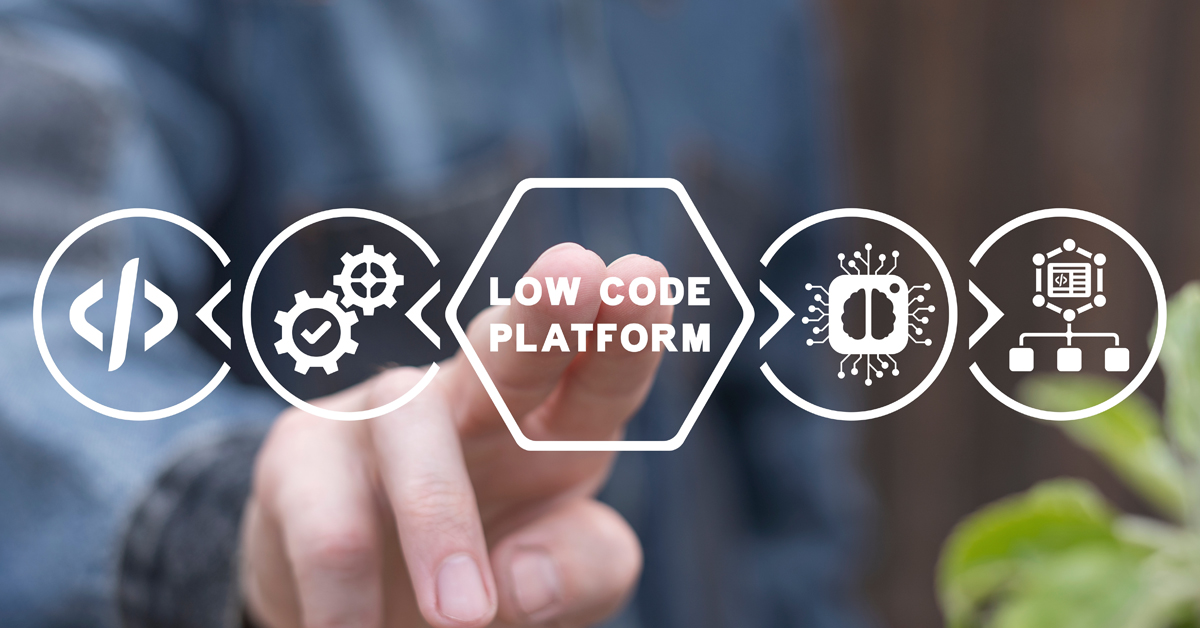Why is financial software development under pressure like never before?
The global financial services industry is running on a widening delivery gap. Business teams are pushing for new products and digital services, but IT backlogs stretch into quarters, sometimes years. Traditional development cycles can no longer keep pace with market expectations, regulatory changes, and competitive threats.
Financial institutions are under simultaneous pressure from:
- Tightening risk and compliance requirements
- Market volatility and competitive pricing
- Fintech disruption and customer expectations for instant services
- Legacy system dependencies
- Rising cost of technology ownership
- Cybersecurity and data privacy obligations
Most of the banks and insurers still struggle, with millions of lines of legacy code, outdated platforms, siloed systems, and fragmented development practices. This gap has forced global enterprises to explore modern delivery models that improve software development agility, without compromising compliance, security, or governance. Low-code has emerged at the center of this shift.
Why is traditional software development failing BFSI?
Software development in financial services has unique complexity. This isn’t consumer app development. These are mission-critical, transaction-intensive, regulation-driven systems that require reliability and auditability.
| Challenge | Reality in BFSI |
|---|---|
| Long delivery cycles | 6–12 months for a single change release |
| Dependency on niche skills | COBOL, Java, .NET still dominate legacy stacks |
| High cost of development | Multiple vendor dependencies, licensing + infrastructure + maintenance |
| Rigid architectures | Hard to adapt business logic and workflows to change |
| Legacy landscapes | Core systems still monolithic and difficult to integrate |
| Regulatory rework | Frequent policy changes force recurring rebuilds |
Even well-funded transformation programs struggle because software engineering isn’t just about code, it requires scalability, compliance control, deployment strategy, and lifecycle governance. Traditional methods remain too heavy for the evolving BFSI environment.
Why is the traditional Build vs Buy model no longer enough?
For decades, CIOs had two choices: Build software in-house (control but slow), or Buy from vendors (faster but rigid). Neither works today.
| Decision Model | Strength | Limitation |
|---|---|---|
| Build | Full control, differentiation | Slow, costly, technical debt |
| Buy | Speed, proven frameworks | Customization limits, vendor lock-in |
The market now demands:
- Differentiation
- Faster delivery
- Integration with legacy
- Lower cost of change
- Compliance
Neither Build nor Buy can deliver all five. That’s why BFSI leaders are adopting Low-code Industrial Development, a third path where teams can assemble enterprise software visually while using code where needed for control.
What is a low-code platform?
Low-code platforms provide a unified environment for designing, building, integrating, deploying, and managing applications with minimal manual coding. They accelerate enterprise software delivery by using:
- Visual development
- Configurable business logic
- Reusable components
- API-first integration
- Declarative modelling
- Built-in governance and DevOps capabilities
- Automation and decisioning frameworks
In BFSI, low-code is not about simple citizen apps. It is used to build mission-critical systems – loan origination platforms, onboarding journeys, regulatory systems, claims processing engines, payment workflows, wealth management portals, fraud case systems, and more.
Low-code amplifies engineering productivity by:
- Architecting design domain models and logic
- Enabling Developers to build applications using custom code when needed
- Assisting business analysts in contributing to process logic
- Ensuring IT maintains control through governance
This model removes unnecessary code work and accelerates value delivery while retaining technical control.
How does low-code redefine BFSI software development?
- Model-driven development replaces boilerplate coding
Developers build apps using visual workflow models and data objects. Code is still used, but meaningfully, not for repetitive scaffolding. This reduces delivery time cycle.
- Reusable enterprise components accelerate delivery
Organizations create shared libraries, customer onboarding modules, eKYC connectors, fraud checks and reuse them across product lines.
- Secure, rapid prototyping
Instead of months of cycles, teams iterate with business stakeholders in real-time. Prototypes become production apps.
- Built-in governance
Low-code platforms include versioning, audit trails, environment management, and approval flows, critical for regulated BFSI environments.
- Future-proof architecture
Low-code supports multi-cloud deployment, load balancing, horizontal scalability, and multi-region resilience. For BFSI workloads handling millions of transactions, this architectural foundation is critical.
Where does low-code drive the highest value in BFSI?
| BFSI Area | Enterprise Use Cases |
|---|---|
| Digital Banking | Online banking portals, customer onboarding, service requests |
| Lending | Loan origination, credit decisioning, collections |
| Insurance | Underwriting, claims processing, policy servicing |
| Risk & Compliance | AML, eKYC, FATCA, suspicious activity reporting |
| Operations | Shared service centers, workflow orchestration, case management |
| Treasury & Trade | Document tracking, approval workflows |
| Wealth Management | Advisory workflows, portfolio onboarding |
What business and technology benefits do low-code deliver?
Low code impacts both strategic transformation and operational agility.
Business outcomes:
- Accelerated time-to-market for digital products and services
- Lower cost-to-build and maintain applications
- Better digital customer experience and STP rates
- Rapid compliance adaptation, a must in regulated markets
Technology outcomes:
- Reduced technical debt through standardized components
- Better integration control across fragmented ecosystems
- Multi-cloud portability
- Centralized governance and DevSecOps support
- Architecture future-proofing through composability
In BFSI, this agility converts directly to business value, faster loan disbursals, quicker claims settlement, and real-time customer servicing.
What is the role of AI in low-code’s future?
Low-code is about intelligent assembly of software.
- AI-assisted development: Generate data models, UI pages, rules, mappings using AI copilots
- AI-infused workflows: Underwriting risk scores, fraud detection, KYC/AML red flags
- AI-driven automation: Intelligent exception handling, document classification
- Composable enterprise + AI agents: Replace hard-coded logic with reusable business capabilities
Future outlook: BFSI software won’t be manually coded, it will be assembled using reusable components + governed AI logic + human oversight.
How does Newgen enable BFSI-grade low-code development?
Newgen brings a proven low-code platform engineered for financial services. With deployments in leading banks globally, NewgenONE, AI-first low code platform, supports complex banking, lending, and insurance workloads for global enterprises.
Built on a unified architecture across process automation, content services, and communication, Newgen enables financial institutions to build applications faster, with compliance, and enterprise control. The platform supports mission-critical journeys such as:
- AI-augmented loan origination and credit decisioning
- Enterprise-wide regulatory and risk management systems
- Connected claims, policy servicing, and underwriting
- Customer onboarding across retail and corporate banking
- Trade finance orchestration and document intelligence
Newgen follows a platform approach, not Build, not Buy, but Build Fast with Control, helping institutions eliminate software fragmentation and legacy complexity.
Conclusion
Traditional SDLC needs support to have an impact in BFSI. Build vs Buy is obsolete. The real shift is toward build faster, build governed, build modular and this is only possible with low-code platforms engineered for BFSI complexity.
Banks that ignore this shift will stay locked in legacy maintenance cycles. Those that embrace platform-led development will ship faster, safer, and smarter, without losing control.
Frequently Asked Questions
1. What is the NewgenONE Low-code Platform?
NewgenONE is an AI-first, enterprise-grade low-code decision intelligence platform that enables financial institutions to build and deploy complex, secure, and mission-critical applications at scale and lets decision makers ride the intelligence wave. It unifies workflow automation, content services, AI-driven decisioning, and customer communication on a single platform.
2. How is NewgenONE different from other low-code platforms?
Unlike generic low-code tools, NewgenONE is purpose-built for enterprise transformation. It is designed to support high-volume, transaction-intense environments like banking and insurance, offering deep integration capabilities, advanced orchestration, domain-rich accelerators, and governance controls for IT teams. It enables organizations to build fast, but with architectural discipline and control.
3. Can low code replace custom-built banking software?
Yes. Low code is now used for LOS, digital onboarding, KYC, CLM, collections, and treasury apps. Code extensions ensure advanced customization.
4. Can NewgenONE support complex BFSI use cases like LOS, underwriting, trade finance, and claims?
Yes. NewgenONE is deployed across global banks, NBFCs, insurers, and regulators for mission-critical use cases such as:
- Loan Origination & Credit Decisioning
- Trade Finance & Corporate Lending
- Claims Automation & Underwriting Workbench
- Regulatory Compliance & AML Case Management
- Customer Onboarding & Servicing
Its architecture supports end-to-end journey automation across front, middle, and back office.
5. Can low code handle large-scale workloads?
Yes. Modern BFSI-grade platforms support microservices deployment, container orchestration, high concurrency, and horizontal scaling.
6. Is NewgenONE secure and compliant for BFSI workloads?
Yes. NewgenONE adheres to SOC 2, ISO 27001, GDPR, PCI-DSS, and regional banking compliance requirements. It ensures data security and governance with:
- Role-based access control
- Encryption at rest and transit
- Audit trails
- Secure DevOps
- Deployment isolation for regulated industries
7. What makes NewgenONE a long-term platform investment for enterprises?
NewgenONE is engineered for scale, resilience, and future growth. It supports:
- Multi-cloud and hybrid deployment
- AI-driven development and decisioning
- Accelerated time-to-market
- Configurable enterprise-wide reuse
- Cross-journey orchestration
You might be interested in

08 Dec, 2025
AI Agent-driven SLA Management: Ensuring Speed and Traceability in Service Operations

08 Dec, 2025
10 Enterprise Content Management (ECM) Use Cases Transforming Modern Enterprises

08 Dec, 2025
How AI-driven Modernization is Powering Exponential Business Transformation

